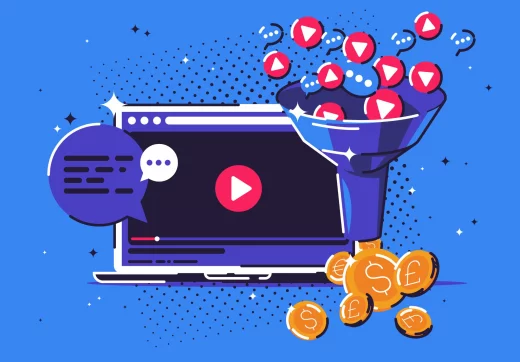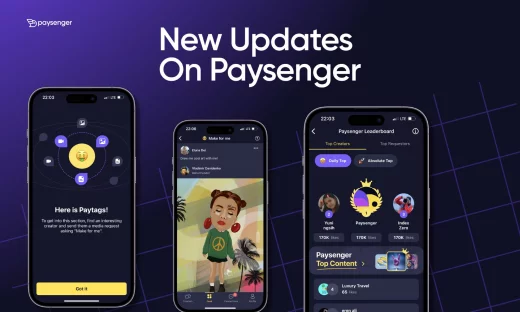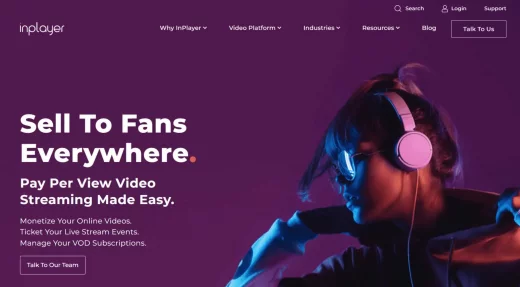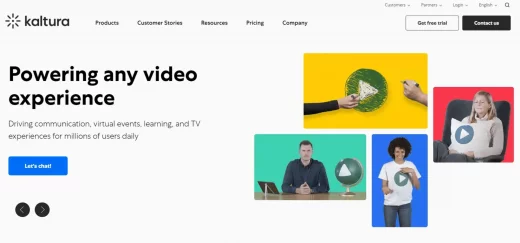If you’re a creator, then you surely know the monetization potential of video content. Follow this guide to learn the best ways to monetize video content in just a few simple steps!
Video is the most favorite content format on the internet for creators, businesses, and marketers alike. That’s because it gets much more engagement than all other types of content. 51% of users are likely to share videos (over other types of content) with their friends and family. In addition, 87% of marketers say that videos help them drive more conversions.
That’s why content creators who focus on video get paid the most and have an extensive list of monetization platforms at their disposal. So, where to start? What platforms to use to monetize your video content and maximize revenue? This guide has everything you need to know.
What is video monetization?

Simply put, video content monetization is a way to earn revenue for posting video content. Thanks to over-the-top (OTT) services like YouTube and Twitch, creators, influencers, marketers, and experts have been pouring video content on the internet to build their audiences and earn revenue.
But how exactly do you get paid for making videos? If you produce engaging content that gets regularly viewed by a significant number of people then businesses will find it worthwhile to place ads on it. Since you are allowing businesses to get ad space on your videos and access to your audiences, you can charge them a fee for ad placements.
Video monetization platforms like YouTube offer you the service to take care of this entire process so you can focus on producing content. YouTube also finds advertisers, collects payments, and pays you your cut seamlessly so all you need to do is post videos.
However, this is not the only way to turn your videos into income. The creator economy has become really complex and you can’t just rely on YouTube revenue. Every piece of content that you produce can be monetized in a number of different ways.
Different ways to monetize video content
Advertising-based video on demand (AVOD)

This is the same YouTube model as described above. There are many ad networks that pay you to place ads from third-party clients on your videos. YouTube’s ad network (Google AdSense) is the biggest one.
In this model, advertisers are charged for every thousand views and the cost is calculated in CPM (cost per thousand views). As a creator, you have to ensure that your videos get the most amount of views as possible to maximize your earnings.
Subscription-based video on demand (SVOD)

Streaming services like Netflix or Amazon Prime charge a monthly fee in exchange for access to premium video content. That’s known as the subscription-based monetization model.
Creators can also use this model to monetize their content by using subscription platforms like Patreon and content on demand platforms like Paysenger.
Transactional video on demand (TVOD)

Also known as pay-per-view (PPV), a TVOD platform charges users a fee to watch a video or a set of videos like online courses. Sites like Udemy or Coursera use this model.
Creators often combine this approach with subscription-based models to create different access tiers. For example, if you’re a fitness coach, you can sell a one-time course on Udemy that promotes a personalized subscription plan for long-term coaching.
With monetization strategies out of the way, let’s take a look at the most popular platforms.
5 Best Video Monetization Platforms in 2023
1. YouTube

YouTube is not only the biggest video platform but also the second largest search engine on the internet. It’s completely free to become a YouTube content creator and it can be used in many different ways to turn videos into income.
The average YouTube creator earns $18 per 1,000 ad views, however, you have to pass the platform’s eligibility criteria before your channel can start earning money.
YouTube Partner Program, that determines monetization eligibility, requires new creators to have:
- At least 1,000 subscribers.
- At least 4000 hours of watch time in the past year or 10 million views on Shorts in the past 3 months.
- Compliance to YouTube’s community guidelines.
Pros
- Completely free for everyone.
- Massive audience, almost unlimited reach.
- Great analytics, growth, and monetization features through YouTube Studio.
Cons
- Extreme competition.
- Strict eligibility requirements.
- Low ad revenue payouts for 90% of creators.
2. Patreon

Patreon is a subscription platform that allows creators to sell content and get paid directly by their audiences. It supports all types of content such as podcasts, e-books, and courses, so it’s a great way to supplement your videos with additional upsells.
Patreon isn’t free, it takes a 5% to 12% cut of out of your monthly income in addition to transaction fees.
Pros
- One of the oldest monetization platforms, so it has a lot of users.
- Doesn’t rely on third-party ads or sponsorship deals, allows you to get paid directly by your viewers.
- More creative freedom.
- Even if you have a small audience, you can still make a stable monthly income.
Cons
- Recurring subscription is a big commitment for both creators and users.
- Users have to pledge a monthly fee (and it's impractical to subscribe to all favorite creators at the same time), and creators have to produce premium content for multiple tiers in addition to free content (effectively, doubling their workload).
- Patreon’s commission percentage is fixed, so you pay a lot more in fees as your income starts to grow.
- Requires users to sign up to donate and consume your content.
3. Paysenger

Paysenger is a modern on-demand content platform and social marketplace. As a creator, you get paid on Paysenger for producing videos that go viral and also for producing videos for other people.
Users on Paysenger can pledge money into a video or ask you to create a video based on their idea to share rewards once the video goes live.
If your videos have viral potential, Paysenger’s algorithm automatically promotes you and encourages users to engage. Engagement and view count on your videos earns you EGO tokens – the platform’s native cryptocurrency which can be used to promote your profile or withdrawn for money.
Some of the features include:
- On-demand content: Charge users a fee to create videos, social media posts, give shoutouts to brands, or to do cameos. Get paid each time you complete a video.
- Paid messaging: Users can reach out to you for a paid direct message to discuss collaboration or to get advice. This is a spam filter and also allows you to make extra income.
- Subscriptions: Unlike Patreon, users don’t need to commit to a recurring subscription. They can simply pay per piece of content.
- Tokenized economy: Paysenger uses a utility token called EGO to reward users for producing viral videos. Tokens can be exchanged for real-world currency or actively traded on the platform for content, branded promotion, and collaborations with influencers.
Pros
- Free for everyone.
- No platform fees or commission fees for the first year.
- Very low competition.
- Allows you to find new audiences directly on the platform. To find Patreon subscribers, you have to post free content on other platforms like YouTube.
Cons
- Still in early growth stages so some of the features haven’t fully rolled out.
4. InPlayer

This is a monetization platform primarily for musical artists. You can easily monetize musical videos, sell tickets to livestream concerts, and manage VOD subscriptions. It also allows you to attract new fans by sharing short highlights from your livestreams. Moreover, you can combine subscription sales and paywalls to create new income streams.
The best part is that it easily integrates with your website, giving you full control over your audiences and subscriptions.
Pros
- Offers seamless multi-lingual support and foreign currency transactions.
- Allows you to customize your offering with multiple monetization models in one place.
Cons
- User interface is slightly difficult to navigate.
- You might require a development team to help you set it up.
5. Kaltura

Kaltura is an enterprise solution designed for webinars, training and big online events.
All of the features are offered separately, for example, you can sign up to get trial access to webinar but you’ll have to contact the sales team to mix and match with other offerings such as trainings or video messaging.
This is a great option if you want to focus on one particular monetization feature alone. If you’re a webinar creator, you can use Kaltura to get advanced email marketing and webinar reminders to maximize your earnings.
But if you’re looking to promote pre-recorded videos and diversify your revenue streams, then you should consider a full monetization platform such as Paysenger or Patreon.
Pros
- Works great for big enterprise teams with high volumes of content.
- Great tutorials and support to help you get started.
Cons
- Not a complete solution for most video content creators.
Conclusion
There’s a plethora of video monetization platforms out there that can serve your needs in many different ways. However, keep in mind that keeping up a consistent stream of high quality videos is a full-time job on its own.
So pick one platform that minimizes the time and effort required to monetize your videos so you can focus on what you do best.
Looking to monetize video content (or any type of content)? Become an early adopter of Paysenger to get access to a social marketplace designed to automatically boost your earnings. It uses algorithms to encourage users to purchase your content and to generate income for you. The only thing you need to focus on is creativity and maintaining a steady stream of fresh content and Paysenger does the rest.
